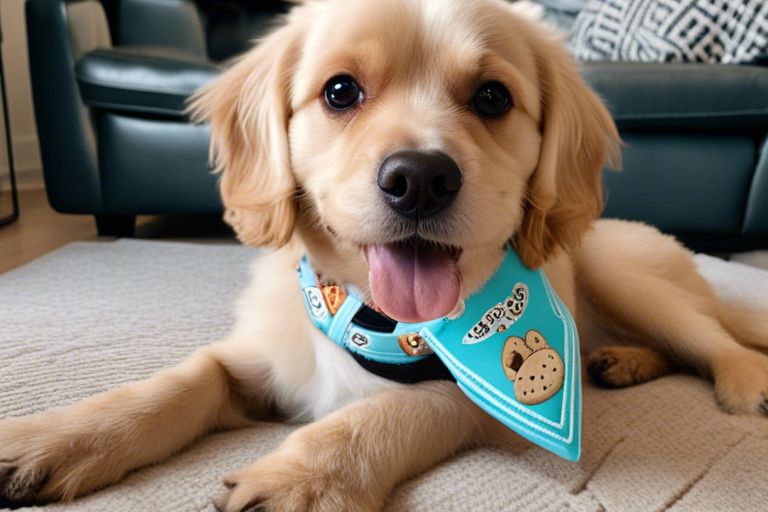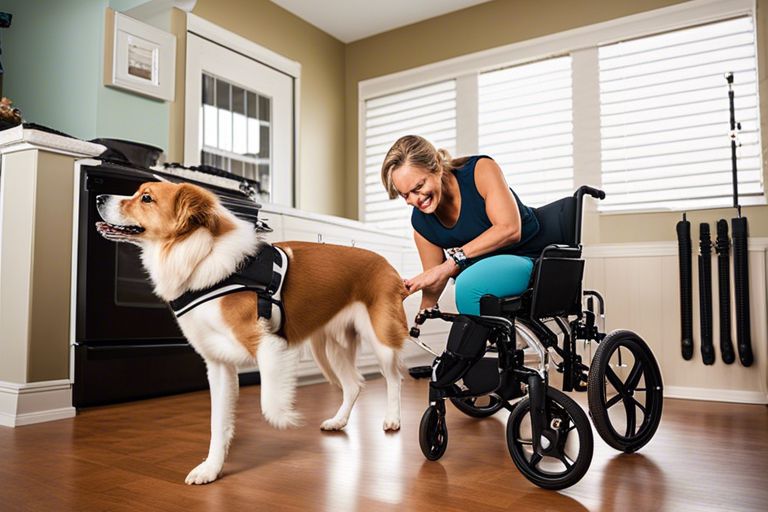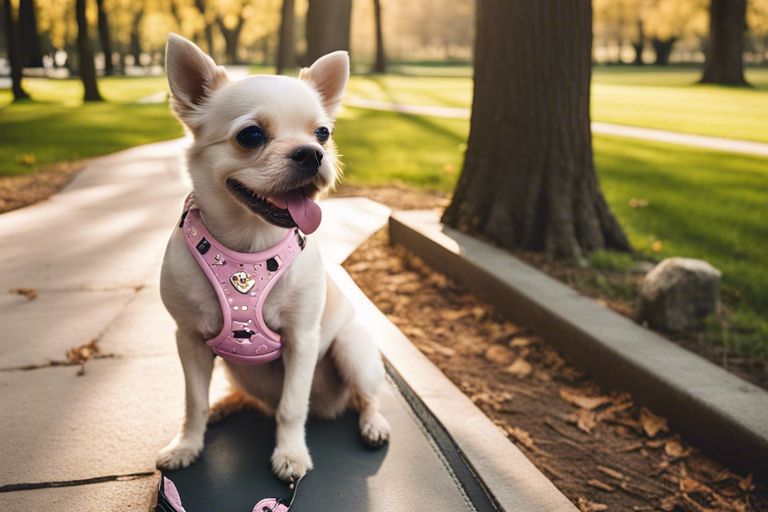As a professional dog trainer with over 10 years of experience, I am often asked about how to prevent small dog aggression. Small dog aggression can be a serious problem, both for the dog and the owner, as it can lead to injuries and legal issues. It’s important to address this behavior as soon as it appears, and there are several effective methods for doing so. The most important factor in preventing small dog aggression is early socialization. Exposing your dog to different people, environments, and animals from a young age can help them develop positive social skills and reduce the likelihood of aggression towards others. Additionally, providing proper training and exercising your small dog regularly can also help prevent aggression by promoting obedience and discipline. In this blog post, I will discuss in detail the best methods for preventing small dog aggression, so that you and your furry companion can enjoy a happy and peaceful life together.
Key Takeaways:
- Socialization: Introducing small dogs to a variety of people, animals, and environments from a young age can help prevent aggression by teaching them to be comfortable and confident in different situations.
- Training: Consistent and positive reinforcement-based training can teach small dogs appropriate behaviors and responses, reducing the likelihood of aggressive behavior.
- Understanding Triggers: Identifying and understanding potential triggers for aggression in small dogs, such as fear or discomfort, can help owners proactively manage and prevent aggressive reactions.

Understanding Small Dog Aggression
The issue of small dog aggression is a common concern among pet owners. The aggression in small dogs can manifest itself in various ways, including barking, growling, snapping, and biting. It’s essential to understand the underlying causes and warning signs of small dog aggression to effectively prevent and manage it. For more detailed information on treating aggression in dogs, you can refer to Treating Aggression in Dogs: Causes, Types, And Solutions.
Common Causes of Aggression in Small Dogs
Aggression in small dogs can be triggered by various factors. Fear, territorial behavior, possessiveness, and inadequate socialization are some of the most common causes of aggression in small dogs. Small dogs may also exhibit aggressive behavior due to pain or discomfort caused by certain medical conditions. It’s crucial to address the root cause of aggression in small dogs to effectively manage and prevent it.
Recognizing Aggressive Behavior
Recognizing the signs of aggression in small dogs is essential for early intervention. Aggressive behaviors in small dogs may include raised hackles, snarling, showing teeth, stiff body posture, and lunging. Additionally, small dogs may exhibit resource guarding behavior, such as protecting their food, toys, or sleeping areas. Understanding these warning signs can help you identify and address aggressive behavior before it escalates.
Training Techniques to Prevent Aggression
While prevention is the key to addressing small dog aggression, training techniques play a crucial role in shaping your dog’s behavior. By effectively training your small dog, you can prevent aggressive tendencies from developing and ensure a harmonious relationship with your pet.
Establishing Leadership and Obedience
Establishing yourself as the leader is vital in preventing small dog aggression. Dogs are pack animals, and they look to their human owners to establish the rules and boundaries. By setting clear expectations and consistently enforcing them, you can show your small dog that you are the leader. Teaching basic obedience commands such as “sit,” “stay,” and “come” will reinforce your role as the leader and help your dog understand what is expected of them. Remember to always use positive reinforcement and never resort to harsh punishments, as this can lead to fear and aggression.
Socialization Strategies for Small Dogs
Socialization is another crucial aspect of preventing aggression in small dogs. Exposing your dog to different people, animals, and environments from a young age helps them learn how to interact appropriately with others. It is important to expose your small dog to a variety of experiences in a controlled and positive manner. This can include taking them to dog parks, puppy classes, and regular walks in different environments. Additionally, supervised playdates with other well-behaved dogs can help your small dog learn how to socialize and play without becoming aggressive. It’s essential to monitor your dog’s behavior during socialization and intervene if any signs of aggression or fear arise.
Environmental Management and Enrichment
Your small dog’s environment plays a crucial role in preventing aggression. It’s essential to create a safe and stimulating environment that promotes positive behaviors and minimizes the potential for aggression.
Creating a Safe and Stimulating Environment
When it comes to small dog aggression, a safe and stimulating environment can make a world of difference. Ensuring that your dog has a designated, secure space within the home where they can retreat to when feeling overwhelmed or stressed is essential. Consider creating a comfortable and safe area with their bed, toys, and other familiar items. Additionally, providing mental stimulation through interactive toys, puzzles, and regular opportunities for exploration and new experiences can help prevent boredom and frustration, which may lead to aggressive behaviors.
The Role of Exercise and Play in Behavior Management
Regular exercise and play are crucial for preventing aggression in small dogs. Engaging in daily exercise not only helps to keep your dog physically fit but also contributes to their mental well-being. Physical activity and play sessions provide an outlet for pent-up energy and serve as a positive way to release stress and tension. Incorporating activities such as fetch, agility training, and interactive play with other dogs can help your small dog expend their energy in a positive and healthy manner, reducing the likelihood of aggressive behavior.
Medical and Professional Intervention
To effectively prevent small dog aggression, it is important to consider medical and professional intervention. These interventions can help address underlying health issues and provide behavioral support to improve your dog’s overall well-being and reduce aggressive tendencies.
When to Seek Professional Help
If you notice persistent aggression in your small dog despite trying various behavior modification techniques, it may be time to seek professional help. Aggressive behavior that poses a danger to you, your family, or other pets should be addressed by a qualified professional. Additionally, if your small dog’s aggression is triggered by specific situations or people, it is important to seek professional guidance to understand and manage their behavior effectively.
Understanding Behavioral Medications and Alternatives
Behavioral medications and alternatives can be a valuable tool in managing small dog aggression. These medications can help address underlying anxiety or fear-based aggression, providing relief for your dog and improving their overall quality of life. When considering behavioral medications, it is important to consult with a veterinarian or a qualified animal behaviorist to determine the most suitable approach for your dog. Additionally, alternative therapies such as aromatherapy, pheromone therapy, and behavioral training can offer effective solutions for managing aggression in small dogs.
I hope this information helps you in understanding the importance of medical and professional interventions in preventing small dog aggression. Remember, seeking professional help and exploring behavioral medications and alternatives can make a significant difference in your small dog’s behavior and well-being.
Conclusion: Best Methods for Preventing Small Dog Aggression
Drawing together all the information presented, I have found that the best methods for preventing small dog aggression include proper socialization, positive reinforcement training, and early intervention. By exposing your small dog to different people, animals, and environments from an early age, you can help them develop good social skills and reduce the likelihood of aggressive behavior. Additionally, using positive reinforcement techniques such as treats and praise for good behavior can help shape your dog’s attitude and responses. Finally, it is crucial to address any signs of aggression early on and seek professional help if necessary to prevent the behavior from escalating. It is important to be consistent and patient when implementing these methods, as aggression in small dogs can be managed with the right approach and commitment from the owner.
FAQ
Q: What are the best methods for preventing small dog aggression?
A: The best methods for preventing small dog aggression include proper socialization, positive reinforcement training, consistent leadership, and regular exercise.
Q: How can socialization help in preventing small dog aggression?
A: Socialization exposes small dogs to various people, animals, and environments from a young age, helping them become more well-rounded and confident. This can reduce their likelihood of feeling threatened and displaying aggressive behavior.
Q: Why is positive reinforcement training important for preventing small dog aggression?
A: Positive reinforcement training methods promote good behavior and help small dogs learn to associate positive rewards with desirable actions. This approach can build trust and strengthen the bond between the dog and its owner, reducing the likelihood of aggression.


